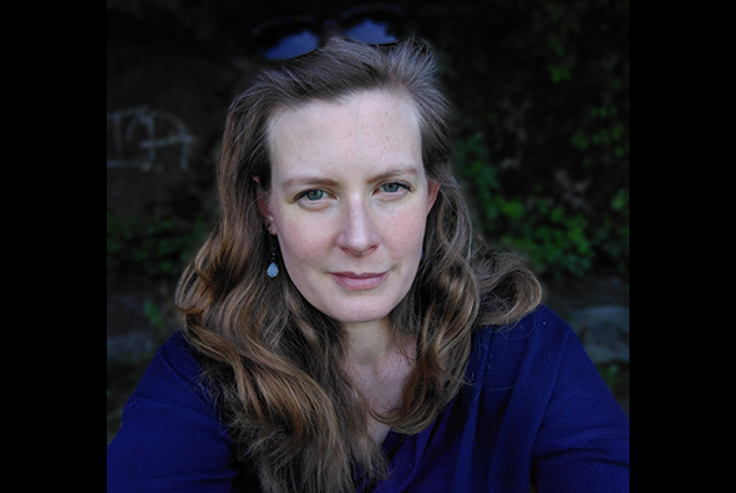Meet our guest researcher – Vera Mitter
News
|Published
Vera Mitter from Switzerland is visiting the Centre for Fertility and Health for 18 months on a postdoc mobility grant. And it all started with a yellow note from a good friend.
This news article is older than 30 days and the information may be outdated
Go to the home pageVera decided at age 37 to embark on a PhD. The thought had crossed her mind many times before, but at that moment she was convinced that she wanted to conduct research herself. Earlier she had supported research projects in the Swiss Childhood Cancer Registry and served as clinical trial pharmacist in a university hospital. Already when studying pharmacy, she wanted to help people stay healthy rather than administrating medication.
A colleague, who was a gynecologist at the University hospital where Vera worked as a Pharmacist, wanted to establish an ART cohort. As Vera had gained experience in research administration at the Swiss Childhood Cancer registry, she was hired to help. This eventually resulted in a successful application for a PhD in Epidemiology on obstetric and perinatal outcomes of assisted reproductive technologies (ART). In just 2,5 years she completed her PhD at the University of Bern.
The yellow note
- A friend of mine was awarded a Marie Curie scholarship to go to the University of Oslo (Oslo Centre for Biostatistics and Epidemiology). There she met Christian Page, one of the researchers at CEFH, and that was it! Christian told her that CEFH was recently founded and that they planned to conduct research on ART. My friend was convinced that I should come here to work. So, one time she came for a visit at our house she wrote a yellow note containing the acronyms CEFH and ART and put it on our kitchen cabinet. It was probably attached there for about 6 months before I finally did something, Vera says.
Vera reached out to Siri Håberg, the deputy director at CEFH, and after a skype call they agreed to proceed with a postdoc mobility grant application after completing her PhD. Following discussions with her husband and two kids, and discussions with Siri and senior researcher Maria Magnus regarding the topic and project, she applied to the Swiss National Science Foundation in September 2019.
She arrived in Oslo with her family on August 5, 2020 and her first day at the CEFH was on September 1.
Research interests
- My main research interest is in sexual, reproductive and maternal health as well as child health and demography, Vera says. There is scant research on women’s health in general, and after becoming a mum myself, this has become more important to me.
In 2019 the average age of Swiss women when they give birth was 31,1 years whereas it was about 29,8 years in Norway. Women keep delaying becoming pregnant and therefore require assistance and the use of ART is rising.
- There are several mechanisms than can explain the increased age at first birth. In Switzerland you almost become a burden to your employer when you are pregnant. You are supposed to work until the day you give birth and the duration of maternity leave is just 14 – 16 weeks, Vera explains. The father did not have any leave at all. However, on September 27 the Swiss Population voted on 2 weeks paternity leave in a referendum (60.3% approved) after highly emotional debates. In Switzerland, mothers are not as well protected by the law as here in Norway. Therefore, I hope that research on maternal health and ART can help inform the public, says an engaged Vera.
Additionally, Vera has an interest in improving and supporting clinical research projects, drug management and research administration.
Advanced research methods and world class data
The main purpose of this stay is to gain more knowledge about research methods and use the data available CEFH. Vera now works with Maria and Siri on the health of children following ART using MoBa and Norwegian registry data.
- We don’t have anything comparable in Switzerland, she explains. The rich data allows an insight not possible elsewhere.
- I think that Switzerland should establish a cohort similar to the MoBa cohort. I believe that it would be very important to collect such data there. And my dream would be to be part of such a project. At least I hope that I can continue conducting research on fertility and health, and I would love to build my own research group or a company providing research support.
Interdisciplinary work
Vera highlights the interdisciplinary environment at CEFH and the many discussions it facilitates.
- My friend with the yellow note told me that there are very good conditions for conducting research in Norway and she was right. I was left much more alone during my PhD in a clinical setting in Switzerland. Hierarchies are very important in hospitals and interdisciplinary work remains a challenge.
She aims to become part of the collaborations and networks, and to learn from successful researchers at CEFH. This may be more challenging in a Covid-19 setting as this makes it difficult to meet colleagues and establish new contacts. It is hard to build up a social environment when one has just arrived in foreign country. Travelling back home to Switzerland is also restricted. Vera hopes that she can nonetheless benefit from the CEFH office space, the research environment and Oslo in general, despite Covid-19.
- If Christian Page had not met my friend, and my friend had not left me that yellow note, I probably would not be here, says a smiling Vera. I am so excited to get access to these large data sets and perhaps I can continue to work with them when I return to Switzerland.
Thank you, Vera, for joining us. We look forward to the coming 17 months!

